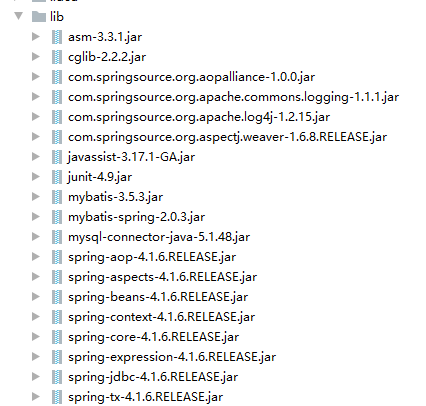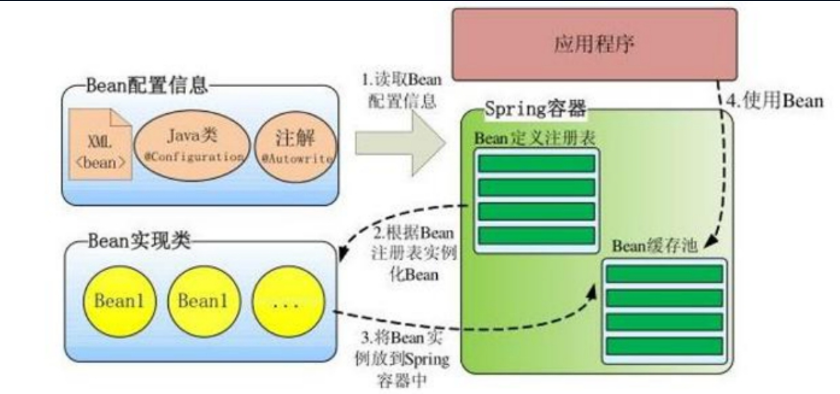1.导包
所有和spring有关的包(有mybatis包的忽略),后期会使用maven引入

2. 引入spring的配置文件
可命名为applicationContext-service.xml或spring.xml
- 注意:这个文件要放在src目录下!
<?xml version="1.0" encoding="UTF-8"?>
<beans xmlns="http://www.springframework.org/schema/beans"
xmlns:xsi="http://www.w3.org/2001/XMLSchema-instance"
xsi:schemaLocation="http://www.springframework.org/schema/beans
https://www.springframework.org/schema/beans/spring-beans.xsd">
<bean id="..." class="..."></bean>
</beans>
3. 创建service层的类
接口:UserService.java
public interface UserService {
//获取信息的方法
public void getMsg(String msg);
}
实现类:UserServiceImpl.java
public class UserServiceImpl implements UserService {
@Override
public void getMsg(String msg) {
System.out.println(msg);
}
}
4. 修改配置文件

5. 运行代码
public class Demo {
public static void main(String[] args) {
//获取spring配置文件生成的对象
ApplicationContext ac = new ClassPathXmlApplicationContext("spring.xml");
//通过bean的id,获取bean对象
UserServiceImpl userService = (UserServiceImpl)ac.getBean("userService");
//使用方法
userService.getMsg("Hello,Spring!");
}
}
运行结果:

6. 解析Spring运行原理
控制反转IOC:

7. Spring容器中管理的bean对象:单态VS原型
7.1 单态模式 singleton(单例模式)(默认)
public class Demo {
public static void main(String[] args) {
//获取spring配置文件生成的对象
ApplicationContext ac = new ClassPathXmlApplicationContext("spring.xml");
//通过bean的id,获取bean对象
UserServiceImpl userService = (UserServiceImpl)ac.getBean("userService");
//比较连个对象的哈希值
System.out.println(userService.hashCode());
System.out.println("--------------------");
UserServiceImpl userService2 = (UserServiceImpl)ac.getBean("userService");
System.out.println(userService2.hashCode());
}
}
运行结果:

7.2 原型模式 prototype
在配置文件中对应的<bean>标签中添加 scope=prototype 属性
<bean id="userService" class="com.yd.service.impl.UserServiceImpl" scope="prototype"></bean>
运行7.1中的代码结果:

总结:
- 当<bean>中加入scope="prototype",表示该对象使用原型模式
- 当<bean>中加入scope="singleton",或不加该属性,表示该对象使用单态模式(单例模式)
- 原型模式:每次获取的对象不是同一个对象
- 单态(单例)模式:每次获取的对象是同一个对象